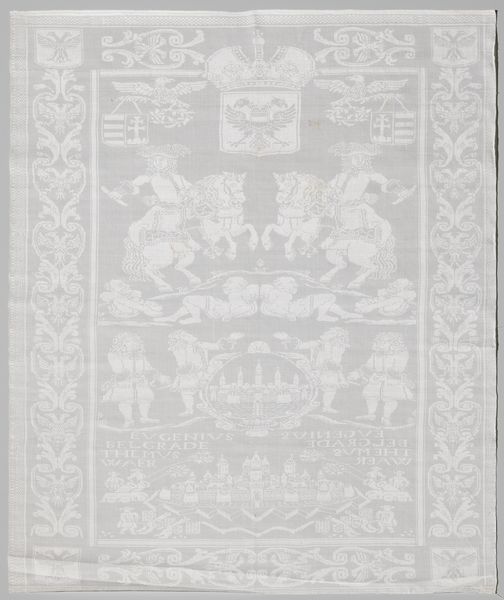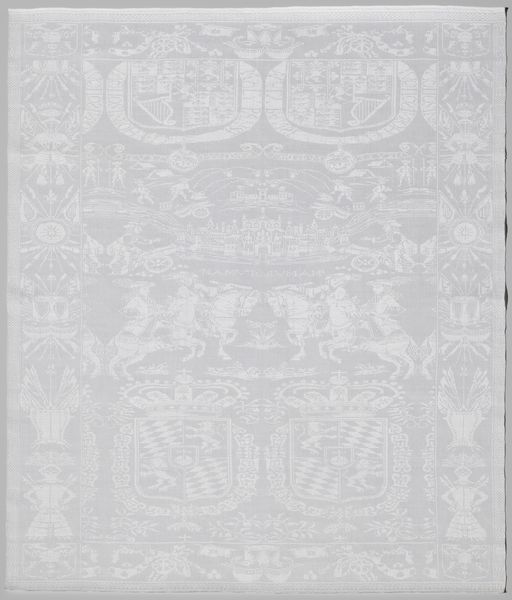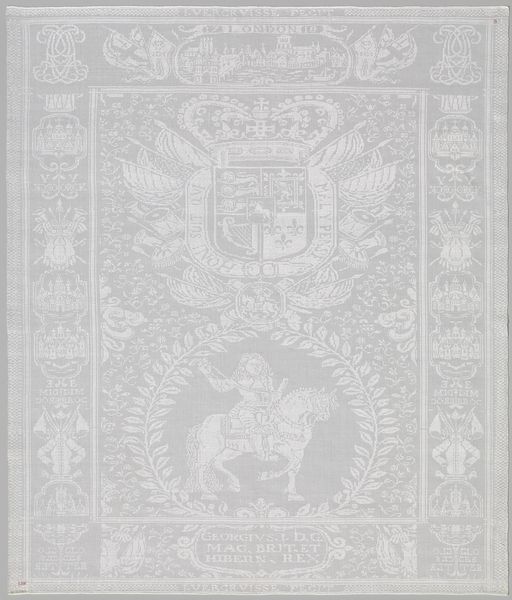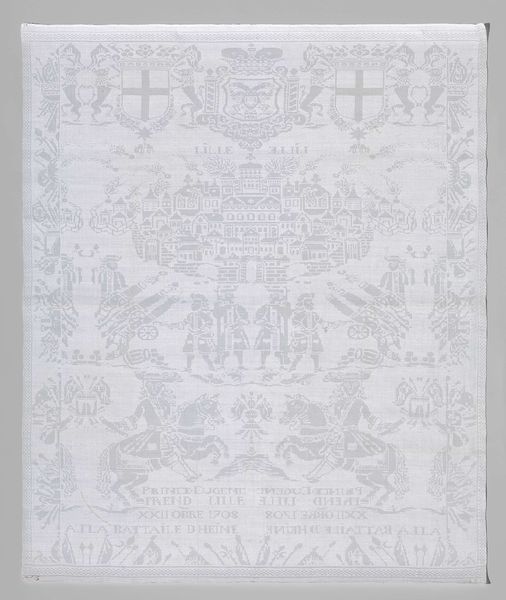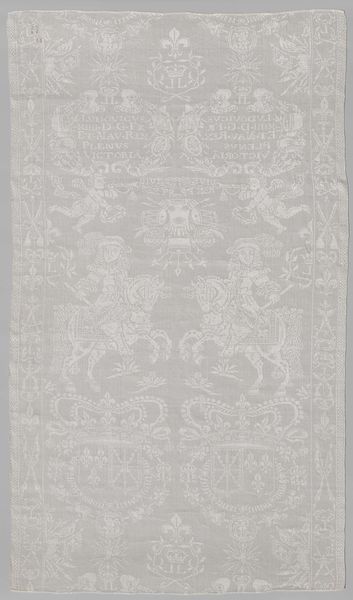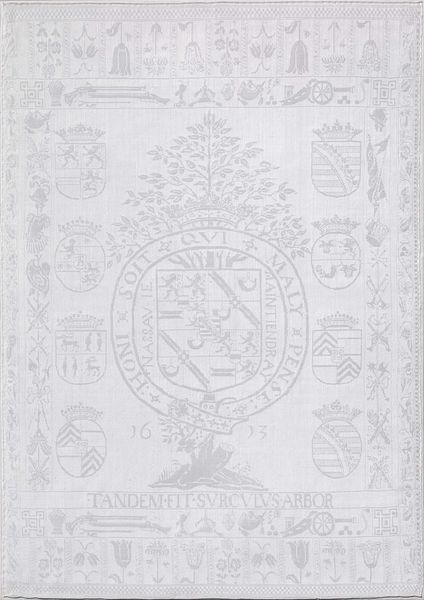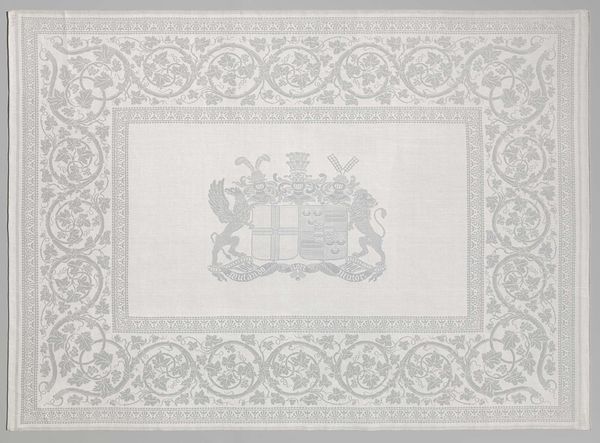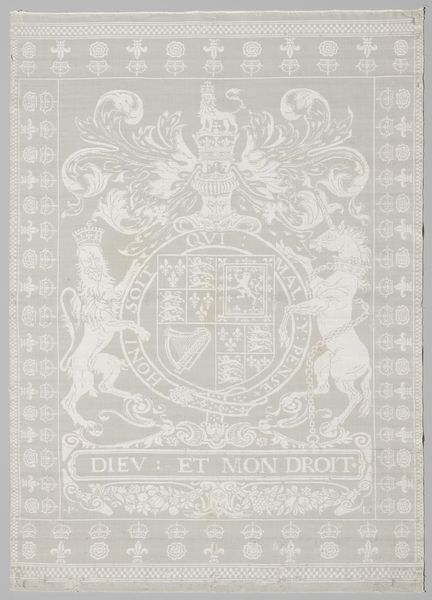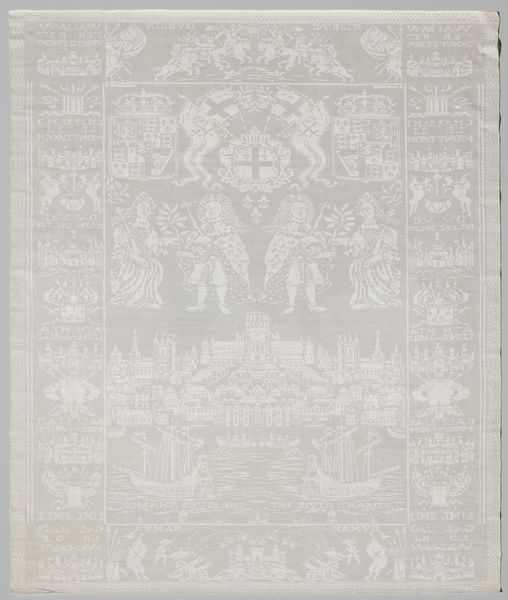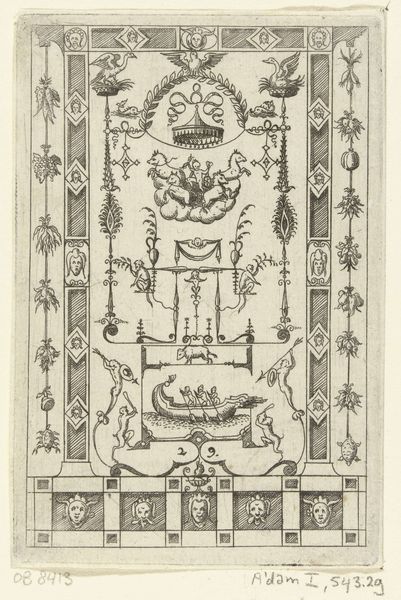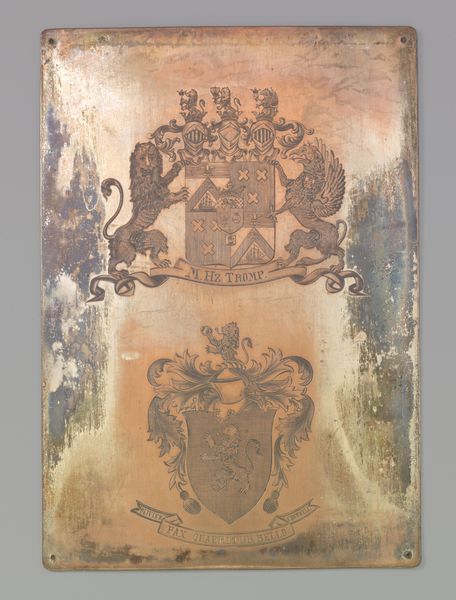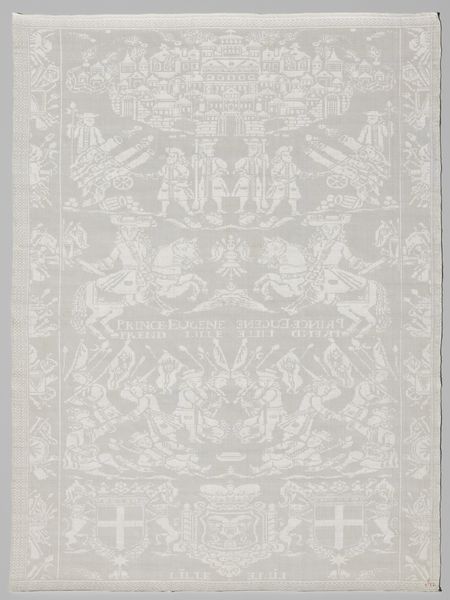
weaving, textile
#
portrait
#
natural stone pattern
#
baroque
#
weaving
#
textile
#
pattern design
#
organic pattern
#
geometric
#
fabric design
#
repetition of pattern
#
vertical pattern
#
pattern repetition
#
history-painting
#
textile design
#
decorative-art
#
layered pattern
#
pattern work
Dimensions: height 117 cm, width 90 cm
Copyright: Rijks Museum: Open Domain
Editor: This is an intriguing linen napkin, “Servet met Jacobus II van Engeland,” made around 1685 to 1688. It’s a woven textile with an almost ghostly pale design. How might we understand the importance of what it represents? Curator: This piece offers a fascinating window into the performative nature of power. Textiles like this were not mere functional objects. They were tools for projecting authority. Editor: A tool? Curator: Absolutely! Imagine the table setting, the linens proclaiming the legitimacy of James II just a few years into his reign. Consider the deliberate display, reinforcing the monarch’s divine right during a time of significant political and religious tensions. Who would have used this and how might the use of the piece shape our understanding of power at this moment? Editor: So it’s less about personal use and more about broadcasting an image? The repetitive nature of the imagery, the royal crests and the king on horseback, that creates the image you suggest. Curator: Precisely. It is image as propaganda in a domestic setting. Editor: Fascinating! I hadn't thought about the way textiles could actively participate in political messaging. The idea of subtly reinforcing authority through everyday objects opens up a new perspective. Thank you! Curator: It’s these small, often overlooked objects that reveal the intricate ways power operates within a culture. Looking closer reveals so much.
Comments
No comments
Be the first to comment and join the conversation on the ultimate creative platform.
